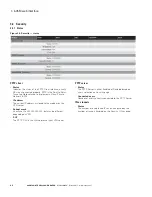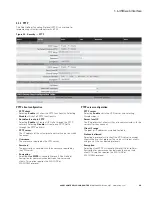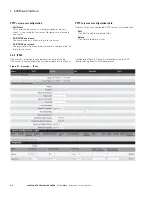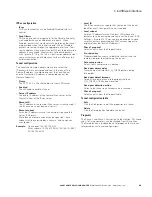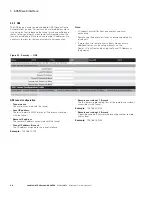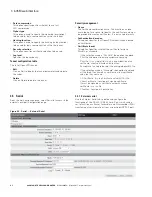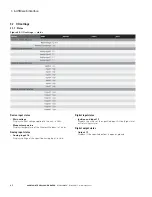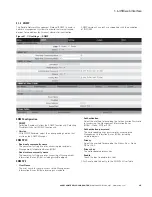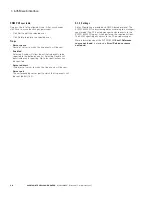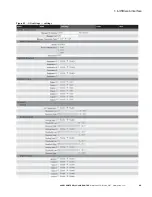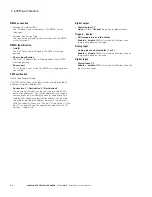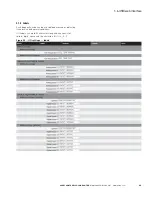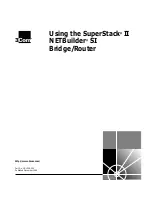
28
645M 4G/LTE CELLULAR ROUTER
MN032003EN March 2017 www.eaton.com
IPSec configuration
•
IPsec
All IPsec functionality can be Enabled/Disabled with this
control.
•
Drop filterss
This setting controls how packets for the Remote Subnet(s)
are handled when an enabled tunnel is down. When
Enabled, packets that would normally go through the tunnel
are discarded when the tunnel is down. When Disabled,
packets are routed through the appropriate interface. Their
source address may be rewritten by NAT but the destination
address is unchanged. Most carriers will discard packets
with “private IP” (e.g. 192.168.x.x) destination addresses but
some carriers may quietly block any further traffic over the
cellular connection.
Tunnel configuration
The Local and Remote Subnets are used to select the
IP packets that are encrypted and sent in the tunnel. The
Source IP address is compared against the Local Subnet
and the Destination IP address is compared against the
Remote Subnet(s).
•
Name
The PPTP P-t-P is the LAN address of your VPN server.
•
Enabled
Check Enable to enable a tunnel.
•
Server IP address
The public IP address of the remote IPsec server or the
firewall in front of the IPsec server.
•
Remote ID
The IP address of the remote IPsec server. Usually empty if
the IPsec server is not behind a firewall.
•
Remote subnet
Enter the IP address/mask of the network(s) beyond the
Server IP Address.
More than one remote subnet can be specified
–
each
subnet must be separated by a comma ‘,’ and no spaces
are allowed.
xample:
E
One subnet: 192.168.100.0/24
Many subnets: 192.168.100.0/24,192.168.101.0/24,1
92.168.102.33/32
•
Local ID
The IPSec server may require that your end of the tunnel
identifies itself. Configure this end, if needed.
•
Local subnet
Enter an IP address/mask of the local LAN whose are
packets are to be encrypted and sent over the tunnel. (LAN
Settings » Bind to Eth IP may need to be enabled to make
sure that packets generated by 645M services appear to
originate from the local LAN address.).
•
Phase 1 proposal
Select an entry from the Proposal table.
•
Pre-shared key
Predetermined key known to both the local unit and the
remote side prior to establishing the tunnel.
•
Data compression
Select if data compression is desired.
•
Dead peer detect delay
Tunnel keep alive time for R_U_THERE packets during
idle periods.
•
Dead peer detect timeout
Timeout time during tunnel idle periods where no
R_U_THERE_ACK has been received.
•
Dead peer detection action
Action to be taken when timeout value is reached.
•
Phase 2 proposal
Select an entry from the Proposal table.
Tunnel configuration table
•
Edit
Click the Edit button to edit the properties of a tunnel.
•
Delete
Click the Delete button to delete the tunnel.
Proposals
The Phase 1 and Phase 2 Encryption, Authentication, DH Group
and Life Time parameters can be changed from this section.
The Delete button is displayed only for proposals that are not
referenced by any Tunnel configurations.
3 645M web interface












